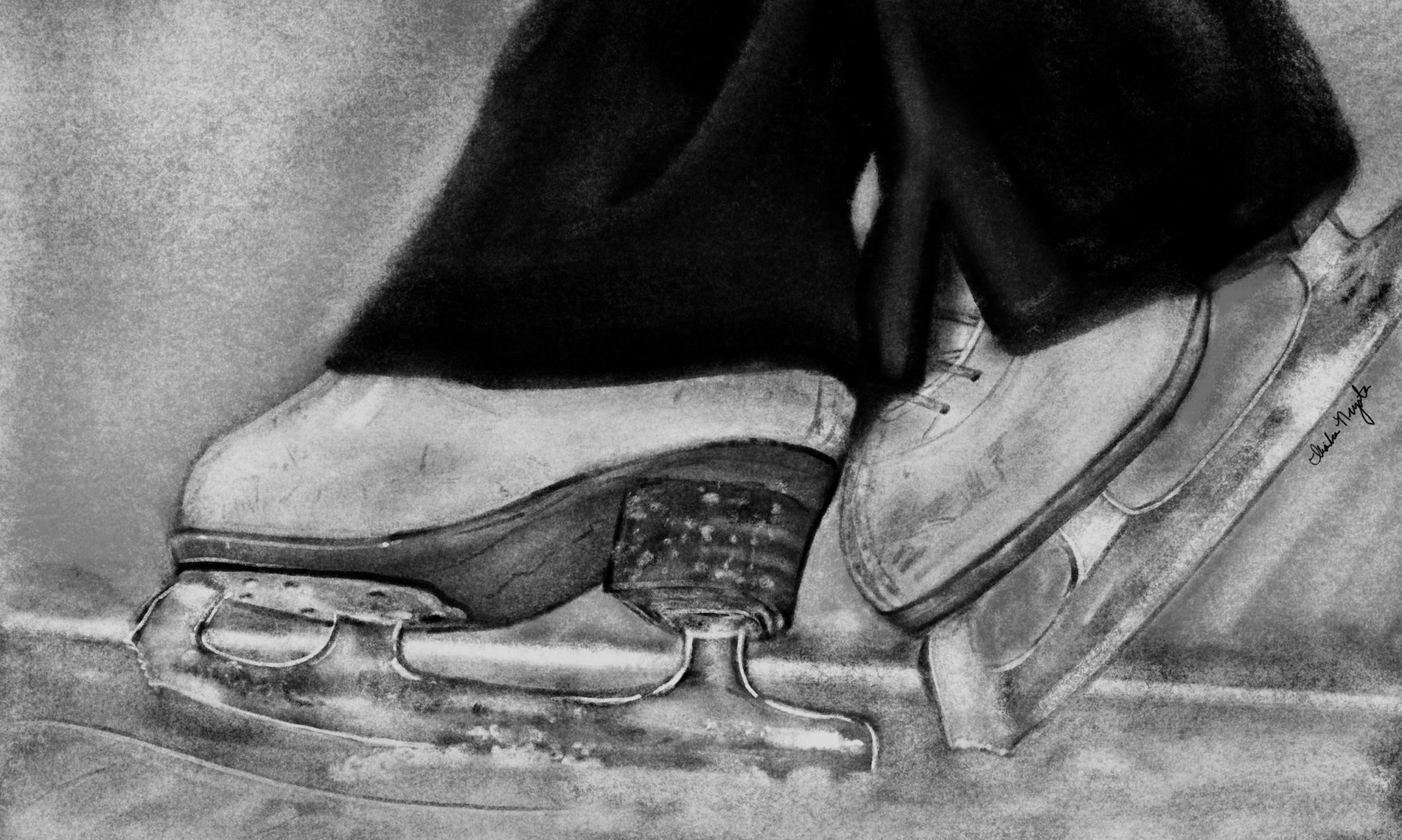We all have thoughts that come out of nowhere to attack us when we least expect it.
In skating it often comes in the form of self-doubts. Take for example, a jump you fall on over and over again. Skaters can build mountains of self-doubting thoughts around this.
Think of your mind as being like your room. When you lie on your bed and look around you, do you see only things that inspire joy in you? Maybe you have a homework assignment you dread and the book is sitting on your desk. No matter how wonderful everything else in your room is, your thoughts will be drawn to that one piece of unfinished business until your whole mood becomes sour.
Your mind is just like this. Everything at the rink is great. Spins, edges, most jumps, and program work are fun. You love seeing your friends and your coaches, but there is one jump that is not working for you. Day after day and week after week go by and that jump landing still doesn’t happen. Soon you leave the rink in a bad mood even though 90% of your time there was great. You avoid “The Jump” and only do it in your lesson with your coach. Life at the rink is awful. You can’t stop thinking about your trouble with this jump.
Just like how your beautiful room filled with wonderful things has changed to “blech” because of that one book on your desk, your time at the rink has become a chore and you might have even moved down into the “I just want to quit” Blues.
Here is how you can “tidy” up your thought library and keep only those thoughts that inspire you.
We will use the Triple Loop jump as an example, but you can substitute any jump or skill you want to.
Step One
Sit in a quiet place and close your eyes.
Let your mind go to the jump you want to land.
What thought comes into your mind?
Don’t be afraid to look at that thought. You are a scientist, an observer with no judgment. You are unattached emotionally to this thought. Look at this thought as if it is under a microscope and see what you can learn about it. In this way, the thought cannot hurt you. You are in charge.
Sometimes the thought is something that you were told once in a specific situation to illustrate a point, or maybe it was just said as an unimportant comment by your coach. Then you took it and created a whole world around it.
“You jump too small to land your triple loop.”
Look at that thought. Are you still the same person as when you heard that comment? Have you grown? Have you done off ice conditioning to get stronger? Is it true that only skaters who can jump super high can rotate the 3Lo?
Use this “thought” as information to improve.
Step Two
You know what you don’t want in your plan. So, what do you want?
“I am a jumper who can rotate the triple loop.”
Step Three
Use the new thought to create a plan.
How can I become that jumper?
I will do my off ice exercises, build my body stronger and work on my timing and technique.
I will approach my on-ice jump exercises with confidence
I will commit to my 3 Loop before I jump it.
Step Four
Release “the thought.”
This is very important. If you don’t complete this step, this thought will come back to haunt you over and over again.
Now that you know this thought is not helpful to you anymore, let it go.
Show appreciation for the thought, for the lesson it taught you. Acknowledge that it helped you to improve in this area.
Now that you have no further use for this thought, you can let it go, comfortable in the knowledge that you learned what you needed to.
You can write it down on a piece of paper and throw it away or burn it, or
You can turn it into a butterfly and set it free.
Step Five
You are left with only thoughts that put you on track to reach your goal.
I am working to be the jumper who can rotate the triple loop.
I am the jumper who can rotate the triple loop.
I land my triple loop with a running edge.
Step Six
Feel free to repeat this process with other thoughts as you find them.
Keep only the thoughts that keep you on the right track, or in other words, keep only those that inspire you.
By tidying your mind and keeping only the thoughts that inspire you, you will find your practice and your life being more productive and efficient.
Mental skills training can make a difference because it can help you access what is already there during competition and practice.
Start here; download “Confidence Myth Busters,” a complimentary eBook and make a change.
Inspired by my reading of Mari Kondo’s The Life-Changing Magic of Tidying Up which is available on Amazon.
